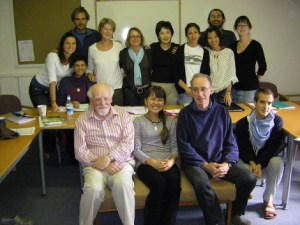This is an excerpt from First Steps to Seeing‘s first ever book review! The review is from my wonderful friend, colleague and fellow aficionado in a dynamic way of seeing, Simon Robinson – editor of Transition Conciousness and co-author of the wonderful new book Holonomics.
Simon has been been supporting and encouraging my philosophical work on exploring and understanding a dynamic way of seeing, almost from the very beginning. So it is with great pleasure that I share with you his reflections on First Steps to Seeing – and with much gratitude that he is the first person to review it. To see the original book review on Transition Consciousness click here.
BOOK REVIEW: FIRST STEPS TO SEEING BY EMMA KIDD
July 6, 2015 · by Simon · in Reviews. ·
If I were only to say that I have been looking forward to reading First Steps to Seeing: A Path to Living Attentively you may not quite realise how much. So I thought I would first start this review by mentioning that I first had the pleasure to meet Emma at Schumacher College in 2009, just after I started my masters degree in Holistic Science and just after Emma had graduated, also in Holistic Science, the year before.
Photo credit: Emma Kidd
In fact, I think I may have first heard of Emma I believe before meeting her, since Henri Bortoft, who was giving the first week of lectures on wholeness, did in fact quote from Emma’s dissertation in one of our classes. This is the quote:
A phenomenological inquiry, as conducted with Goethean methodology, is a form of dynamic engagement with the world – dynamical doing by dynamical seeing; it allows you to see the whole within the parts and brings the world to expression.”
In bringing a phenomenon to expression, perceived qualities have to be expressed, but also simultaneously expressed to be perceived; as if the phenomenon is an active subject that reaches out to us. This calls for a hermeneutic understanding of expression as a reciprocal dynamic process, with perception and expression being intrinsically related.
To read the rest of the original post click here – Book review

